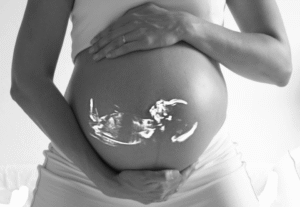Introduction-
Pneumonia refers to an infection within the lung, occurring due to purulent material, filling the alveoli. It is either bacterial or viral in nature and may cause life threatening illness. pneumonia affects people across all age groups. It is a form of an acute respiratory infection.
Transmission of pneumonia : how does it spread?
- For children, The viruses and bacteria in a child’s nose or throat, can cause infection if inhaled.
- air-borne droplets from a coughing and sneezing.
- Pneumonia may spread through blood, especially during and shortly after birth.
What happens after infection occurs?
The alveoli of one or both lungs fill up with purulent substance, either pus or fluid. This increases the work of breathing, and thus gaseous exchange cannot occur normally.
What causes infection?
The bacteria can be passed from person to person and also from the environment. Therefore practising good hygiene is essential and can minimise the spread of infection.
Types –
Bacterial Pneumonia occurs when pneumonia-causing bacteria multiplies in the lungs. The alveoli become inflamed and filled with pus, spreading across lungs. eg Streptococcus pneumonia, Staphylococcus aureus, Haemophilus influenza, etc.
2. fungal pneumonia- This typically occurs in people who have a weakened immune system.This is usually inhaled from the environment. It also affects people with previous health issues.
3. Viral Pneumonia – The viruses invade the lungs and then multiply- causing inflammation. eg coronavirus [ COVID-19, syndrome (SARS)], Influenza type A or B,etc
Risk Factors
- Weakened immune system- elderly and children
- Those with previous health issues
- Cigarette smoking
- Exposure to asbestos
- Age >65years
- Aids
- Cardiovascular conditions
- respiratory comorbidities-COPD, asthma, emphysema, bronchitis
- diabetes
- stroke
- Immunosuppressive disorders and therapy
Clinical scenario-
The signs and symptoms vary. Early symptoms include fever and cough. Chest pain occurs because of inflammation in the lung. Other symptoms are headache, fatigue, myalgia, and arthralgias.
Severe cases of pneumonia can lead to shortness of breath along with symptoms such as confusion, sepsis, and multi-organ failure.
Severe cases also show hypoxia which in turn causes hyperventilation.
- Clinical signs are Tachypnea, dullness to percussion and presence crackles, rales, bronchial breath sounds on auscultation.
Post pneumonia complications-
- Pleural effusion –fluid accumulates between the pleura and the chest wall and may cause lung collapse.
- Empyema – Pus may be present in the lungs from infection.
- Bacteremia – when infection spreads from lungs and moves into the bloodstream.
- meningitis – The infection may spread to the meninges that cover the brain and spinal cord.
- Endocarditis or pericarditis.
Also read-https://vcurehealthcare.com/what-is-anemia-read-to-know-more/





